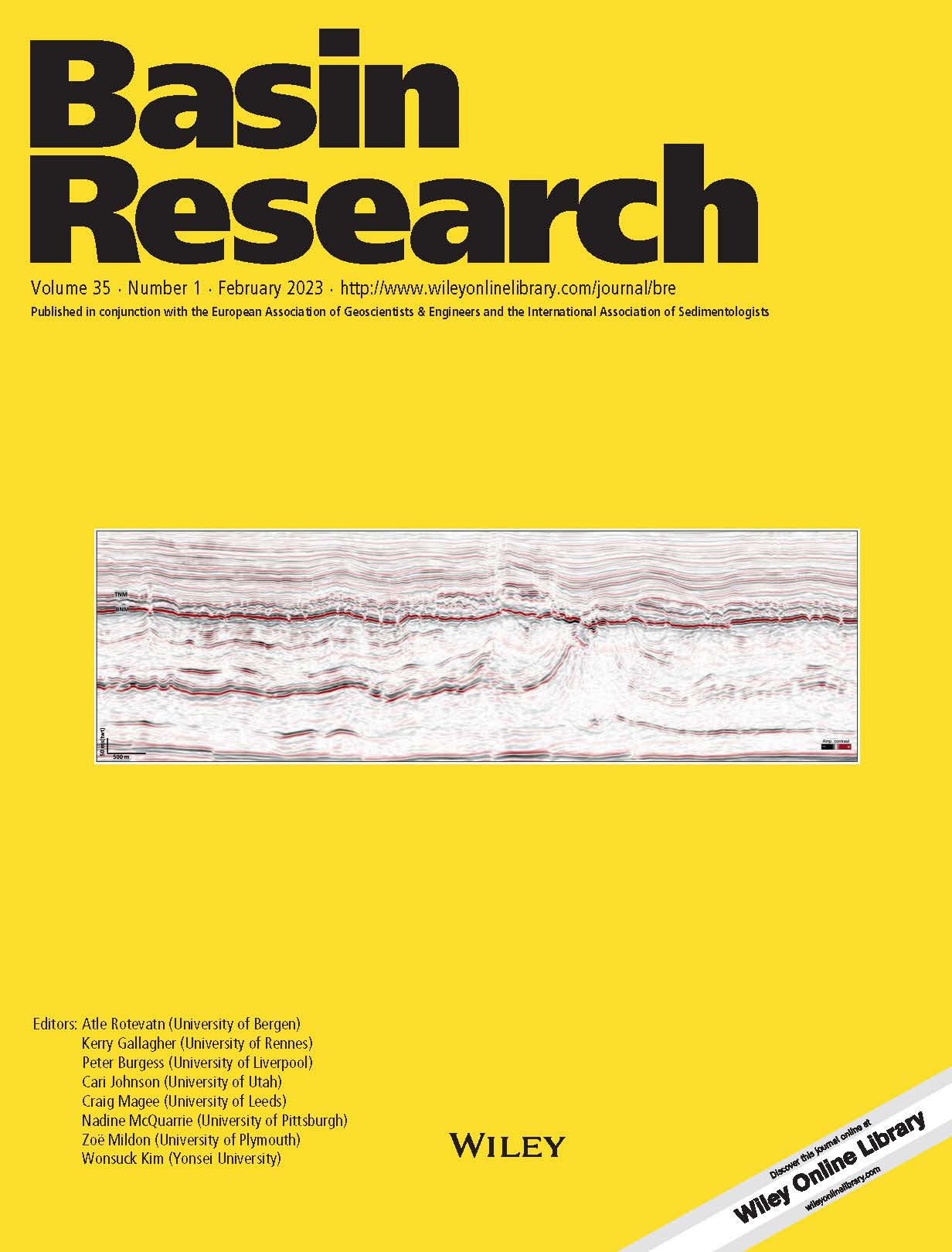
Full text loading...
 , Piret Plink‐Björklund2
, Piret Plink‐Björklund2 , Leland Spangler1,2
, Leland Spangler1,2
Examples of architectural styles observed in the study area and a comparison with proximal, medial, and distal areas of a modern fluvial fan. (a) Amalgamated channel fills and minor floodplain, interpreted as proximal fan deposits. The degree of channel amalgamation is highest in the most proximal sector where the fan area is smallest, and the aggradation rates and channel‐return frequency are highest. (b) Heterolithic channel fills and floodplain, interpreted as medial fan deposits. Increased spacing between channel deposits and decreased channel belt size are attributed to losses from infiltration and to the medial fan's larger area, allowing for greater preservation potential for mudrock‐prone floodplain deposits. (c) Isolated channel fills and dominant floodplain, interpreted as distal fan deposits. The more isolated channels are thought to result from a continued widening of the area covered by the fan and additional decreases in discharge due to losses from infiltration (d) Satellite image obtained from Google Earth of a 60‐km long fluvial fan in the Taklamakan Desert, Xinjiang, China with approximate locations of modern proximal, medial and distal fan annotated.
Basin‐scale outcrop analyses of fluvial architecture in the Palaeogene San Juan Basin, New Mexico, document lateral and vertical trends in channel, floodplain and palaeosol characteristics. Herein, the uppermost part of the Palaeocene Nacimiento Formation and lower Eocene Cuba Mesa and Regina Members of the San Jose Formation are identified as deposits of large fluvial fans based on trends observed across the basin. Stratigraphic trends suggest two packages originated by fluvial fan progradation. Progradation of the lower fan system provides a new explanation for the transitional nature of a disconformity at the Nacimiento–San Jose Formation contact, previously thought to be a low‐angle unconformity. The two fan systems are separated by a retrogradational interval that culminates in a depositional hiatus at the contact between the Cuba Mesa and Regina Members. This, combined with poor age constraints, indicates that the duration of the disconformity at the base of the Cuba Mesa Member may have been overestimated. Furthermore, the succession is interpreted as deposits of variable‐discharge rivers, based on the combined abundance of upper flow regime and high deposition rate sedimentary structures indicative of intense flooding events, preservation of in‐channel bioturbation and paedogenic modification indicating periods of prolonged dryness, lack of identifiable bar strata and alternations of poorly drained and well‐drained floodplain deposits with pedofacies indicating alternating wet–dry cycles. This dataset adds to a growing body of evidence linking the formation of large fluvial fans to discharge variability and thus to hydroclimates with significant inter‐ and intra‐annual precipitation variability and intense rainfall. A long‐term stratigraphic shift from poorly drained to well‐drained floodplain deposits across two progradational fan successions indicates that a predictive model suggesting downstream decreases in soil drainage conditions is not encompassing of all large fan systems, and instead suggests a transition to a more arid climate across the Palaeocene–Eocene boundary.
]
Article metrics loading...

Full text loading...
References


Data & Media loading...

